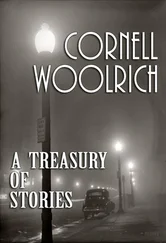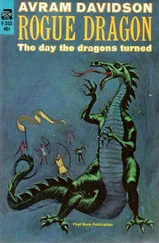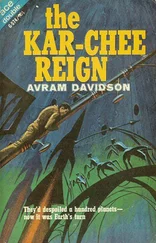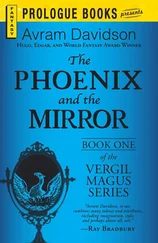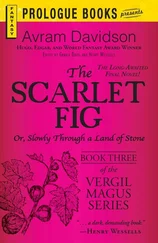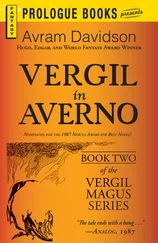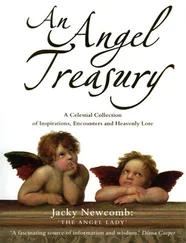There was, off the kitchen, a large broom closet, with a crack in the wall. Queen Esther peered through the crack. Diagonally below in the cellar was an old victrola and on it the maid had draped her coat and overcoat and scarf; next to it were street shoes, not much less broken than the ones she wore around the house.
Mistress Raidy stood next to the gramophone, her head lifted, listening. The hum of the vacuum cleaner filtered through the house. With a quick nod of her head, tight-lipped in concentration, the mistress began going through the pockets of the worn garments. With little grunts of pleasurable vexation she pulled out a half-pint bottle of fortified wine, some pieces of cassava cake. “That’s all we need. A drunken maid. Mice. Roaches. Oh , yes.” A smudged hektographed postal card announcing the Grand Annual Festivity of the St. Kitts and Nevis Wesleyan Benevolent Union, a tattered copy of Lucky Tiger Dream Book, a worn envelope …
Here she paused to dislodge a cornerless photograph of Queen Esther’s brother Samuel in his coffin and to comment, “As handsome as his sister.” There were receipts for international postal orders to Samuel’s daughter Ada—“Send my money to foreign countries.” A change purse with little enough in it, and a flat cigarette tin. This she picked at with nervous fingers, chipping a nail. Clicking her tongue, she got it open, found, with loathing large upon her face—
— a tiny dried frog — a frog ? — a — surely not! —
“Oh!” she said, in a thin, jerky, disgusted voice. “Uh. Uh! ” She threw the tin away from her, but the thing was bound with a scarlet thread and this caught in her chipped fingernail.
“—out of this house! ” she raged, flapping her wrist, “and never set foot in it again , with her filthy — ah! ” The thread snapped, the thing flew off and landed in a far corner. She turned to go and had one unsteady foot on the first step when she heard the noise behind her.
Later on, when Queen Esther counted them, she reckoned it as twenty-five steps from the broom closet to the bottom of the cellar stairs. At that moment, though, they seemed to last forever as the screams mounted in intensity, each one seeming to overtake the one before it without time or space for breath between. But they ceased as the maid clattered down the steps, almost tripping over the woman crouched at the bottom.
Queen Esther spared she no glance, then, but faced the thing advancing. Her thrust she hand into she bosom. “Poo!” her spat. “You ugly old duppy! Me never fear no duppy, no, not me!”
And her pulled out the powerful obeah prepared for she long ago by Gran’dame Hephsibah, that sagest of old women, half Ashanti, half Coromanti. The duppy growled and driveled and bared its worn-down stumps of filthy teeth, but retreated step by step as her came forward, chanting the words of power; till at last it was shriveled and bound once more in the scarlet thread and stowed safely away in the cigarette tin. Ugly old duppy…!
Mr. Raidy took the sudden death of his wife with stoical calm. His young brother very seldom has nightmares now, and eats heartily of the savory West Indian messes that Queen Esther prepares for all three of them. Hers is the little room in the attic; her chimney passes through one corner of it, and Queen Esther is warm, warm, warm.
The Sources of the Nile
INTRODUCTION BY GREGORY FEELEY
By 1960 Avram Davidson had developed his own peculiar mastery of the modern short story, and within ten years he would produce a novel of classic stature, but his work in the “novelette” form — that hybrid category, shorter than the novella that has enjoyed so distinguished a history in American literature yet essentially different from the brief compass of the short story — has been relatively little remarked. To be sure, the (much later) Limekiller and Eszterhazy stories are mostly novelettes, but they possess the peculiar status of stories that form parts of a sequence, and can moreover be seen as variations (in their different ways) on the Vergil Magus figure, which increasingly occupied the last decades of Davidson’s life. The actual novelette, which can retain the concision and urgency of the short story while permitting more complex dramatic development, is a form that the early Davidson rarely used.
When “The Sources of the Nile” appeared in the January, 1961, issue of Fantasy & Science Fiction , Davidson had written one previous novelette, the unorthodox time-travel fantasy “Take Wooden Indians,” which Galaxy had published a year earlier. The two stories are essentially companion pieces: each is set in a contemporary Manhattan that is satirized with an acute eye; each offers an escape from the world of commercial philistinism into another time. But while the arcadia of “Take Wooden Indians” is the idealized small-town America of the nineteenth century, “The Sources of the Nile” looks rather to the future, a future in which one can escape the banalities of modern fashion only by embracing them. This paradox (the first of several) lies at the heart of Davidson’s story, which is constructed of oppositions — something subtly different and more complex than the contrasts (between a rich past and an impoverished present, for example) that constitute Davidson’s more usual dramatic method.
Don Benedict, the sculptor of “Take Wooden Indians” who yearns to be an artisan laboring in the extinct craft of carving cigar-store Indians, is able to escape the horrors of the modern art world by way of the mysterious Elwell equations; but Bob Rosen, the struggling writer in “The Sources of the Nile,” sees the commercial bonanza implicit in the Bensons’ ability to predict fashions as a means of making his fortune. He is also besotted with the Bensons’ daughter Kitty, with an erotic (and comical) urgency that foretokens his role as betrayed dupe. But Bob Rosen (whom we first see reading an arcane article on “The Demography of the Jackson Whites”) is also enough of a scholar gypsy — though distracted by avarice and lust — to appreciate the Bensons for the wonder they are: the fascination they hold for him is also the fascination they hold for us.
This complexity of motivation — as well as the fact that the faithless Rosen has wronged his girlfriend Noreen as surely as she (later) wrongs him — gives the story a moral core (although one hesitates to apply so sober a term to a work of such comic energy) that is significantly knottier than most of Davidson’s stories dealing with an artist at odds with the workaday world, in which the protagonist tends to get off rather easily (and women rather hard). Even Davidson’s villain, the awful T. Pettys Shadwell (“the most despicable of living men”), seems no worse, save for his appalling style — the perforated business cards being an especially nice touch — than the executives who go baying after Peter Martens’ secret, a pack among which Rosen finds himself. Davidson’s exhilarating comedy, which begins with old Peter Martens cadging the drinks that will kill him and ends in utter defeat and desolation, is humor of the blackest hue.
Davidson considered himself weak in plot construction, and indeed many of his stories constitute a triumph of stylistic virtuosity over structure, but the architecture of “The Sources of the Nile” is nearly perfect. The story is free of expository baggage (compare “Take Wooden Indians,” which betrays an occasionally unsure hand) and exceptionally close-knit: tiny droll elements (such as the talkative blonde in the bar) appear, seemingly as throwaway lines, then later prove crucial to the plot. Davidson’s earlier short stories were largely miniatures, which often revolved around a single dramatic event; his later stories tended toward the picaresque. “The Sources of the Nile” is one of the few works in which Davidson combined the compression of his finest prose with genuine dramatic development.
Читать дальше

